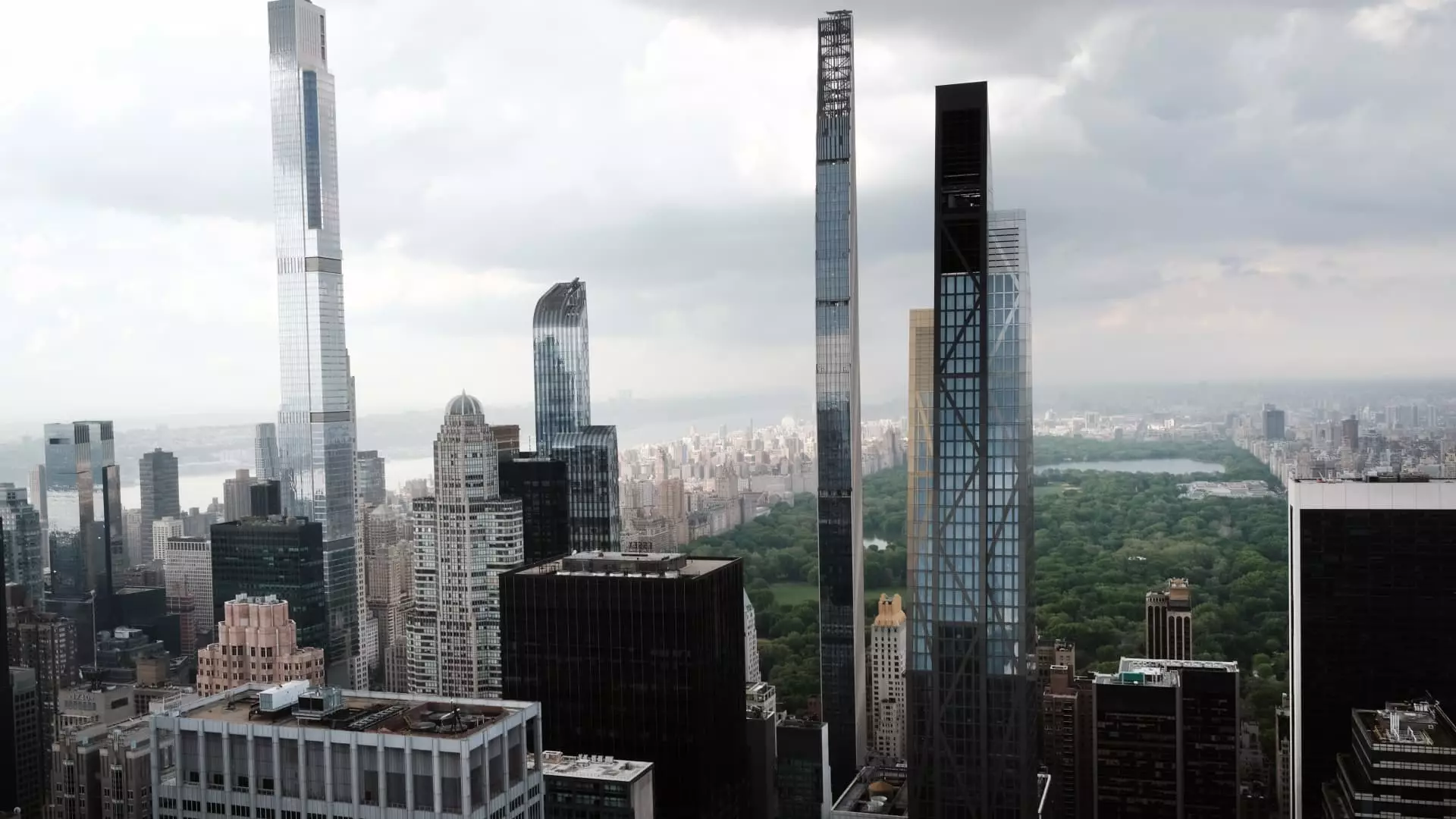In an astonishing turn of events, Manhattan’s luxury real estate sector experienced a remarkable 29% increase in sales during the first quarter, compared to the same period last year. This surge translated to a total of 2,560 closed sales, skyrocketing from the 1,988 in the previous year. Wealthy buyers, eager to shield their investments from the tumultuous stock market, are driving this conversion to tangible assets. The allure of safe-haven real estate seems to be more pronounced than ever, especially for those with the financial muscle to procure high-end apartments.
The aggregate value of these transactions reached a staggering $5.7 billion—a jaw-dropping 56% leap from a year prior. The majority of this growth can be traced back to properties priced above $5 million, which saw an impressive 49% uptick in sales compared to last year. This indicates a migration of wealth towards luxury living that many may consider indicative of broader economic trends.
Cash Is King: The Allure of Liquid Investment
A notable 58% of transactions in this quarter were cash purchases, highlighting a significant shift towards liquidity that is characteristic of the ultra-wealthy. For properties priced over $3 million, this percentage soared to an astonishing 90%. These numbers serve as a firm reminder that high-net-worth individuals possess the financial wherewithal to sidestep the implications of elevated interest rates, thus allowing them to seize opportunities in a volatile market.
The comfort that comes with cash transactions not only simplifies the buying process but also allows purchasers to bypass the unpredictable machinations of mortgage rates. With no strings attached, affluent buyers are able to close deals with swiftness and confidence. This trend could suggest that the luxury market is not merely surviving; it is thriving through the winds of economic change.
The Mid-Market Decline: A Cause for Concern?
Yet not all is rosy in the Manhattan real estate scene. The mid-market segment—properties valued between $1 million and $3 million—has shown signs of distress, with signed contracts declining by 10%. This decline raises eyebrows and questions about the sustainability of the middle-tier market. In stark contrast, more affordable properties, priced between $500,000 and $1 million, fared better, seeing improved performance.
This divergence in market health is concerning because it hints at an inequality where the wealthy continue to thrive while middle-income buyers grapple with stagnation. The disparity may lead to a segmented market that marginalizes buyers in the “mid-level” range, potentially exacerbating existing socio-economic divides.
The Impact of Macro and Micro Forces
What factors are contributing to this bifurcation in the market? Participants in the real estate industry cite both macro- and microeconomic forces driving the renewed interest in luxury properties. With a shaky stock market making high-risk investments less appealing, real estate is being perceived as a safer bet. Furthermore, trends like return-to-office mandates are coaxing affluent individuals back to Manhattan, solidifying their commitment to the urban lifestyle.
Perhaps the most intriguing development is the phenomenon of the “boomerang wealthy.” These are buyers who, after initially fleeing to warmer climates during the pandemic, are now returning. Real estate agents have noted an influx of individuals relocating from Florida and California back to New York. This reversal could signify a rekindled appreciation for the unique offerings that only Manhattan can provide.
The Great Wealth Transfer: A New Generation of Buyers
Another significant driver of the luxury market is the so-called “great wealth transfer,” which sees trillions of dollars transitioning from baby boomers to their heirs. A rising class of affluent young buyers is emerging—those who are leveraging trust funds and family offices to invest in real estate. This influx of new wealth is dynamically reshaping the buyer landscape and is indicative of long-term shifts in investment strategies.
Real estate agents report a surge in activity from family offices, many of which are opting for long-term asset acquisitions. This could hint at a fundamental transformation in how wealth is allocated and preserved within families. The focus appears to be shifting toward tangible assets that will withstand time and market cycles.
Future Predictions: Is the Wave Sustaining?
Despite the positive numbers, the story isn’t entirely rosy. Various experts caution against premature optimism, pointing out that closed transactions in the first quarter are reflective of decisions made months prior. The economic uncertainties that surfaced as the quarter ended could introduce complexities that might not yet be visible in the data.
However, the outlook for Manhattan’s luxury market remains bright. For instance, trends suggest that signed contracts for high-value properties—those priced over $10 million—tripled in March. This growth could signal sustained interest, entertaining the notion that, rather than merely holding steady, Manhattan’s real estate market is, in fact, excelling in a trying economic landscape.

Leave a Reply